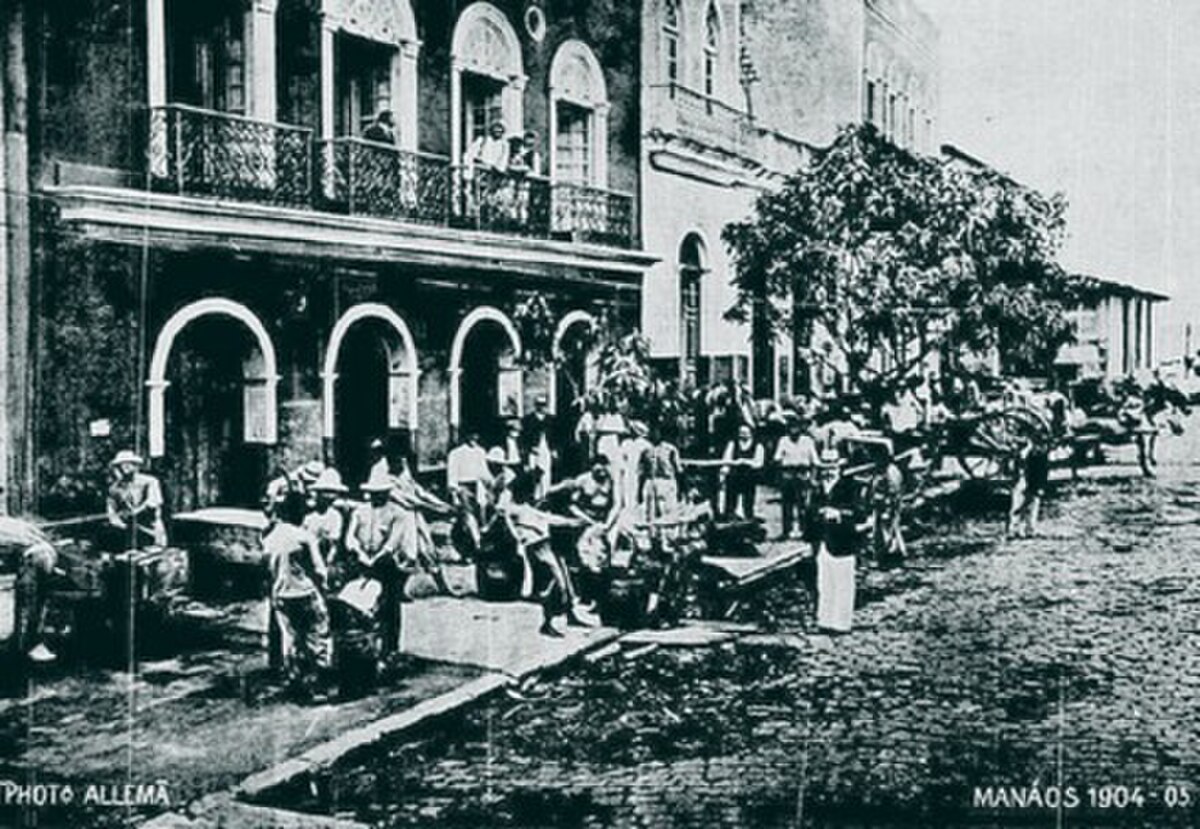
Amazon rubber boom
Manaus, State of Amazonas, BraThe rubber boom in the Amazon in the 1880s–1910s radically reshaped the Amazonian economy. For example, it turned the remote poor jungle village of Manaus into a rich, sophisticated, progressive urban center, with a cosmopolitan population that patronized the theater, literary societies, and luxury stores, and supported good schools. In general, key characteristics of the rubber boom included the dispersed plantations, and a durable form of organization, yet did not respond to Asian competition. The rubber boom had major long-term effects: the private estate became the usual form of land tenure; trading networks were built throughout the Amazon basin; barter became a major form of exchange; and native peoples often were displaced. The boom firmly established the influence of the state throughout the region. The boom ended abruptly in the 1920s, and income levels returned to the poverty levels of the 1870s. There were major negative effects on the fragile Amazonian environment.
